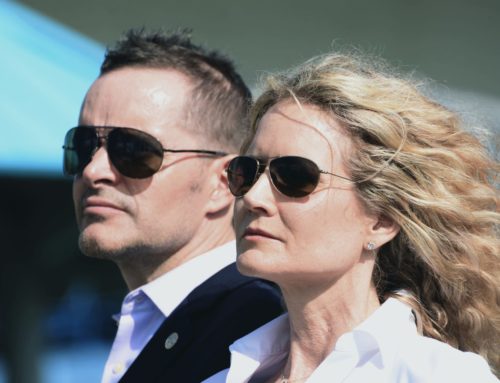For close to a century and a half, Lewis Carroll’s novel, “Alice in Wonderland,” has entertained children and adults and provided analogies for columnists.
It certainly felt like I had gone down the rabbit hole with Alice, to a land where rational thinking and common sense evaporate like Cheshire cats, when I was contemplating the upside-down world the American pharmaceutical industry occupies.
California-based Gilead Sciences Inc. (GILD) licensed seven India-based generic drug makers to supply cheaper versions of its hepatitis C drug Solvaldi to more than half the world’s population for about $10 per pill. By contrast, Americans are paying $1,000 per pill for the drug, meaning a 12-week treatment costs $84,000 — ouch!
As many as 150 million people in the world live with chronic hepatitis C infection, according to the World Health Organization. Each year, 350,000 to 500,000 of them die.
Apparently, one reason Gilead entered the licensing agreements for Solvaldi was to avoid the problem of others producing counterfeit generic versions.
Tamir Ahin of the Initiative for Medicines, Access & Knowledge said the licensing agreement “is designed to thwart generic competition. The deal involves some of the largest generic suppliers in the world. In one fell swoop, Gilead has locked up the main competition for generics.”
But why did Gilead license Solvaldi at such an enormous discount?
Gilead wanted to avoid the damage to its reputation that the pharmaceutical industry sustained more than a decade ago in South Africa over litigation surrounding access to costly AIDS medications.
The company wanted to forestall foreign governments’ efforts to seize or invalidate the company’s patents. In 2009, the Brazilian patent authority rejected Gilead’s patent application for a drug called Viread.
Like Alice, Gilead is a rational entity operating in a Mad Hatter’s world. Gilead cogently defends its patchwork pricing system. Its licensing agreement of Solvaldi lets patients in poor countries afford the treatment. On the other hand, it can charge higher prices in the U.S. so it can earn a very profitable return on the drug.
The high prices of some drugs in the U.S., particularly those that treat cancer, have led some of the nation’s most prestigious hospitals to balk at prescribing some medicines. Reformers want our government to negotiate directly with drug makers for volume discounts in the federal Medicare program.
But under current law, the government cannot negotiate for lower drug prices.
So the Mad Hatter design of America’s pharmaceutical industry and its unsustainable economic model result in this mad result: To recoup the outrageous costs of getting FDA approval on new medicines — more than $ 1 billion per drug — our drug makers must charge premium prices in America.
According to an article by PBS, “Why Americans Pay so much for Pharmaceuticals,” Americans spend almost $1,000 per person per year on prescription drugs. That is more than double what citizens in countries such as France, Australia and Germany do.
In the rest of the world, national health officials have extensive bargaining power to secure discounts from our drug companies. By contrast, in the U.S., insurers typically accept the price set by the makers of each drug and cover the cost with high copayments.
Going it alone makes no more sense than life down a rabbit hole. To be economically sustainable, other wealthy nations must share more equitably the enormous costs associated with developing new drugs.
We need to work toward the following goals:
Representatives of our government empowered to work with the leading medical officials of other developed countries to establish a more equitable pricing model. That model must include higher prices for drugs in those countries and lower prices in the U.S.
Appropriate returns to drug companies so they can afford to continue research and development.
Originally published in the Sarasota Herald-Tribune

